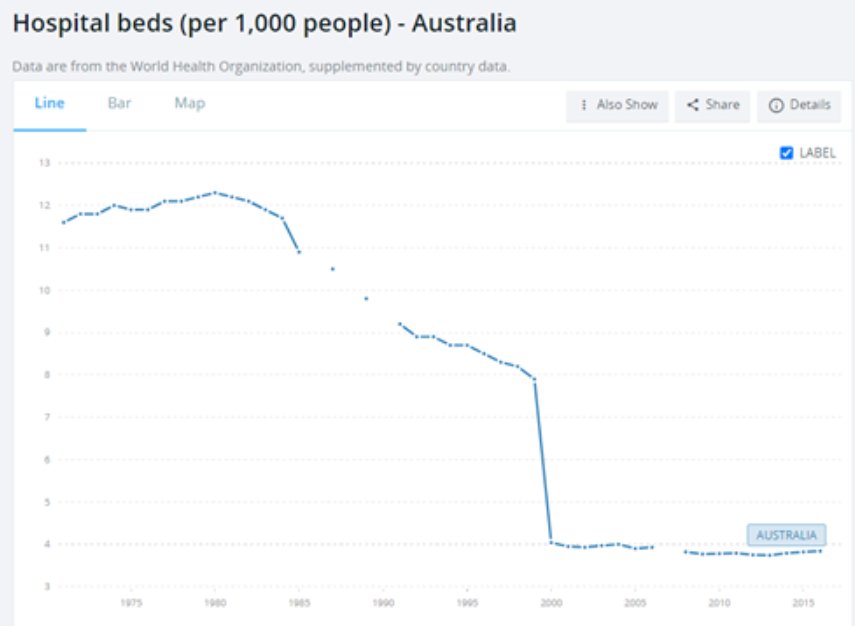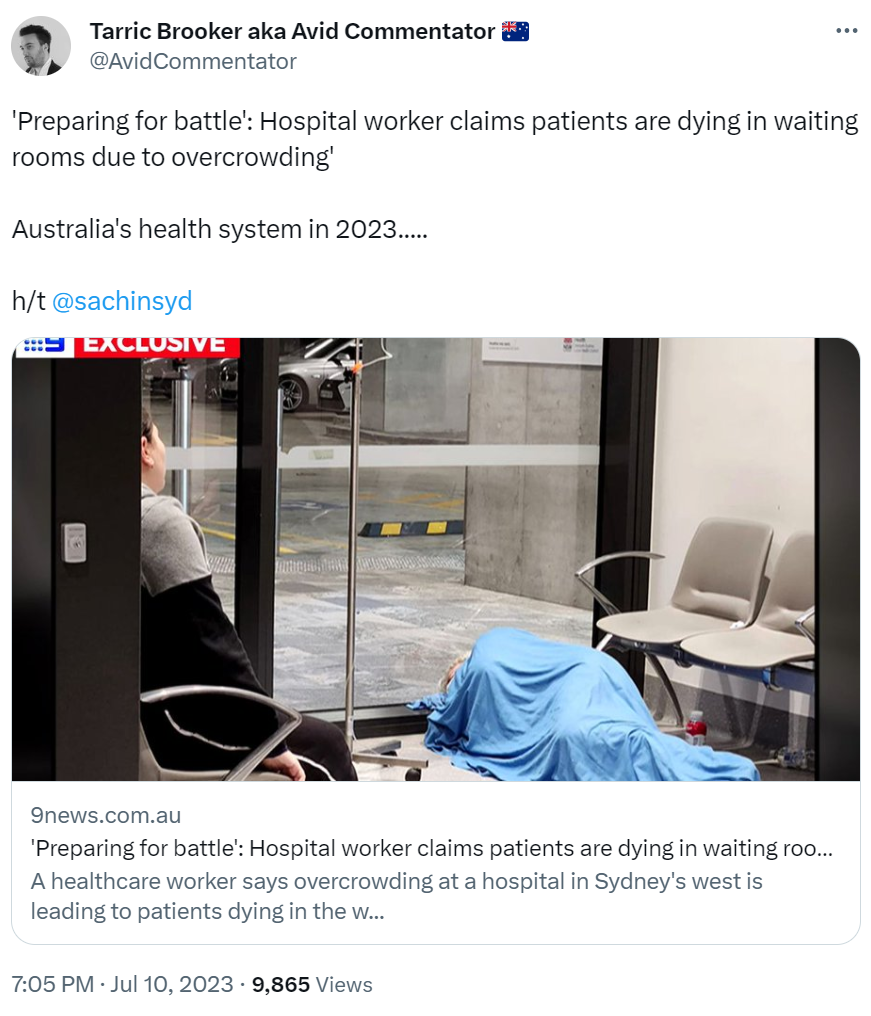After growing by more than 6 million people already this century, Australia’s population is officially projected to swell by another 2.18 million people in the five years to 2026-27, driven by unprecedented net overseas migration of 1.5 million people over the same period.
In turn, Australia’s population will grow by a Perth’s worth of people in just five years, driven by an Adelaide’s worth of net overseas migration.
This extreme population will arrive at the same time as actual dwelling construction is falling:

Accordingly, Australia’s already acute housing will continue to worsen, driving rents higher and forcing more Australians into group homes and homelessness.
A similar situation is also taking place with respect to infrastructure, which had already fallen well behind 15 years of extreme population growth pre-pandemic.
Housing estates have popped up like mushrooms in bid to house the millions extra people. But infrastructure never keeps up.
News.com.au encapsulated the problem on Monday in an article about Blacktown in Sydney’s northwest, which is one of a number of suburbs expected to swell as many families are priced out of Sydney’s inner suburbs:
The local government area’s population – NSW’s largest – is forecast to balloon to more than 560,000 by 2050, having already surpassed Canberra in size.
Riverstone MP Warren Kirby said families had been lured to the area on Sydney’s northwest fringe with the promise of schools and parks.
The local business chamber president believed many of those promises had not been kept amid an “overshoot” in population growth.
“There is a ripple effect going all the way through the community,” Mr Kirby said.
“We have areas that were going to have 500 homes; instead, there’s 1000 going in.
“The road infrastructure isn’t suitable to cope. The school infrastructure isn’t suitable to cope.
“The biggest outcry is for parks because people here simply do not have yards for kids to play in.
“These families don’t have access to green space to be able to go walking around with their kids.”
Mr Kirby warned that the infrastructure crisis, including school oversaturation, was already causing “social consequences”.
The issue isn’t unique to Sydney, as cities around the country grapple with population growth amid ongoing housing and cost-of-living crises.
The vast bulk of the projected 1.5 million net overseas migrants will arrive in our big cities, where infrastructure and services are already overburdened.
For every 100,000 new people, expect 60,000 to 70,000 more cars on the road. And, given our migrant’s lower pay profile, they won’t be driving Teslas worth $65,000 or more, much to the dismay of wealthy inner-city Teals and Greens.
No, they are more likely to be driving older, high-emission vehicles since that is what they can afford.
Then there’s Australia’s health system, which is already straining under the weight of its present population:

Australia has not built hospitals in proportion with its population increase. So good luck building enough new hospitals to meet the predicted Perth’s worth of population increase over the five years to 2026-27. That’s not going to happen.
Tarric Brooker captured the issue perfectly in the following Tweet last month:

“They have died because the emergency department was so overcrowded that patients we have already seen have not moved on and we can’t treat new patients”, the article reads.
Schools are seeing similar overcrowding.
With many major cities now accepting increased population density within existing urban footprints, we will need to find capacity for more students within existing areas. This inevitably leads to increased overcrowding.
“Every extra million people (as for example predicted for each of our major capitals in just a few short years) will mean an extra 160,000 students. At a rough average school size of 400 students, that’s another 400 additional schools for each million of extra population”, Ross Elliott wrote in A Looming Schools Shortage.
The next drought will very likely leave Australia short of reliable drinking water, which will be exacerbated by millions of extra mouths to hydrate.
As a result, the solution will be to develop more energy-intensive desalination plants at the cost of billions of dollars.
This leads into Australia’s energy shortage, which has been mostly caused by poor policy (particularly in the gas sector), but will be exacerbated by increased demand due to extreme levels immigration:

The Albanese Government’s extreme immigration will exacerbate all of these problems.
However, as is customary, the media, policy makers, business groups, and think tanks like the Grattan Institute will disregard the many negative externalities caused by massive levels of immigration.
Welcome to the ‘everything shortage’, which will only get worse.

